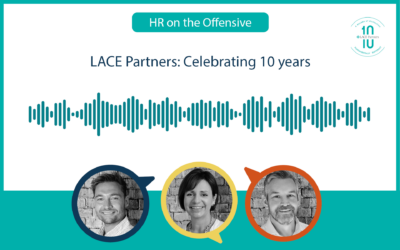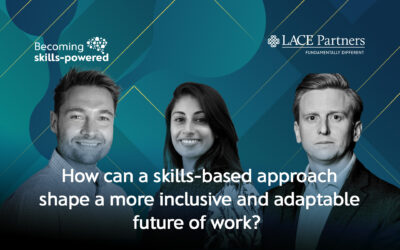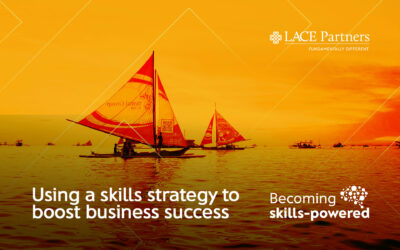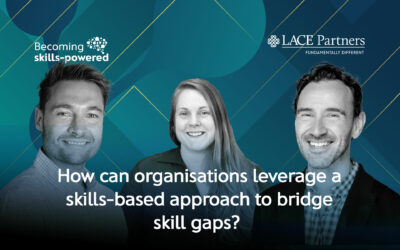On Wednesday 29th July we hosted the latest in our ongoing LACE Partners webinar series (you can watch the recorded version of the webinar series here) which looked at the role that the digital employee experience plays in the working world post Covid-19. We’ve listed some of the questions that were discussed during the webinar by way of a follow up. If you’d like to keep informed of our webinars, podcasts, white papers etc, you can follow us on LinkedIn or subscribe to our newsletter – fill in your email details at the bottom of our homepage to make sure you don’t miss anything.
How much have your employees’ lives changed since lockdown and how have HR departments adapted their digital offering?
The rapid rate at which businesses were required to change working patterns and habits for their employees had a profound impact on the way in which businesses were run. Now, as we exit lockdown, organisations of all shapes and sizes are having to reflect and assess how much they will revert back to ‘the old ways’. Remote working is now on the table for many businesses and digital HR transformation has become a debate in the boardroom with more focus than ever before.
But whilst the discussion on implementing new HR technology to better serve a changing and more remote workforce is now ‘front and centre’, how many businesses are mapping out their full technical roadmap and how many have taken the time to assess how their digital objectives need to change? So many businesses have been understandably focused on keeping themselves profitable, that strategic thinking on ‘why are we doing this and what difference is it going to make to the efficiency and productivity of our people?’ is often being overlooked.
Just because you’ve seen a shiny new piece of employee engagement tech that has the potential to deliver an enhanced digital offering, it doesn’t mean that implementing it ASAP is going to have an instant result. Especially if you haven’t mapped out the journey you need to go on to ensure the technology meets your objectives.
How can you deliver an effective employee experience, what are the principles and how do you deliver a ‘self-service approach’ to your employees?
These are million-dollar questions that do not come with an out of the box answer. But some of the core principles discussed on the webinar included ensuring that the employee experience is driven by your employees. Our speaker, Luka Winterborne, spoke of the approach he takes in using a ‘4D methodology’ – discover, define, develop and deploy. He explained that, within the approach, it is essential to ensure that your employees are consulted in one-to-one sessions, surveys and continuous feedback loops.
It is also important to set some guiding principles on your approach to employee experience. Some of the principles discussed on the webinar were to be people focused, strive to be adaptive and agile, ensure you use data effectively and as an enabler, as well as trying to keep processes as simple as possible.
But giving employees the power to ‘self-serve’ is also critical and particularly relevant in the current climate. As a leader within the business, ask yourself honest questions about whether you are culturally ready to implement self-service. How are the people in your business likely to respond to the change and do they have the ability to quickly adapt? In more traditional industries, there may be more ‘hand holding’ by HR compared to industries where rapid change – like technology-based businesses – is considered the norm. There is no point funding a self-service solution if you haven’t effectively communicated your approach and mapped out your internal PR strategy for getting your people engaged with the new way of working, so having these plans ready before you implement your new HR technology is a given.
Should you digitise and implement self-service across all processes and parts of the organisation?
Is your business appropriate for self-service across the board? If you have an army of people who don’t have access to tools whilst ‘on the job’, then asking them to log information, download documentation etc. when they get home from a hard day’s work may fall on deaf ears. Empathy with and understanding of the people in your organisation is key. Talk to them. Engage them throughout the process. Let them have a voice as you steer the business towards a more digitised approach to your HR strategy.
During the webinar, we also spoke of the importance of creating different personas for employee groups. If you have a varied workforce (engineers, head office workers etc.) who may be located in different geographical locations, persona mapping helps to build a better understanding of the differing internal customer experience, which also helps to appreciate that employees will have different requirements and constraints when it comes to implementing a self-service model for your HR processes.
Let them know the objectives and why you want to move to a self-service approach. If your objectives aren’t related to improving productivity, enhancing the experience and making employees lives easier through self-service, then perhaps you need re-evaluate your objectives.
The role of the line manager is key
As was pointed out on our webinar, the importance of ensuring line managers are upskilled in managing people is an essential and ongoing process and must be viewed as vital to the success of digitising the employee experience. There are unique journeys for each line manager and ensuring they are supported – via effective signposting on intranets, as well as a blend between one-to-one support and automating processes – is fundamental.
Communication – especially at this time – is more important than ever with so many people remote-working. But simplicity is key for line managers. Simplifying processes so that a line manager need only focus on the two or three tasks that they must complete during a hiring process of a new employee, rather than involving them in the entire stages from start to end, was one example that was discussed; but there are countless other ways in which the ‘noise’ can be filtered out make things easier for line managers.
How can you measure the success of your employee experience?
COVID-19 has shifted the way in which businesses use the data at their disposal and we heard examples of regular ‘pulse’ systems in place to evaluate employee sentiment. Some of the examples of the questions asked included how line managers are supporting their people and how physical and mental wellbeing had changed during lockdown. But once again, the underlying message was clear: use data to your advantage and to inform your thinking on employee experience but match it with qualitative approaches such as one-to-one conversations.
Ongoing feedback loops are important but they need to be two way because HR talks a lot about what it can give to the business, but employees also need to have the desire to provide the information and feedback for the HR team to act on. Essentially, it’s about the ‘employee deal’ – the ‘give and the get’. It is about transparency i.e. ‘we will give you this communication and information, in return this is what we expect from you’. If you have an organisation that is willing to be transparent and the employees are also willing to do the same, then you can start to make informed and effective strategic decisions on where your approach to digitising the employee experience is going.
If you’d like to talk to any of the LACE Partners team about how you are approaching employee experience and self service within your business, wherever you are at in your journey, then contact us – info@lacepartners.co.uk.






